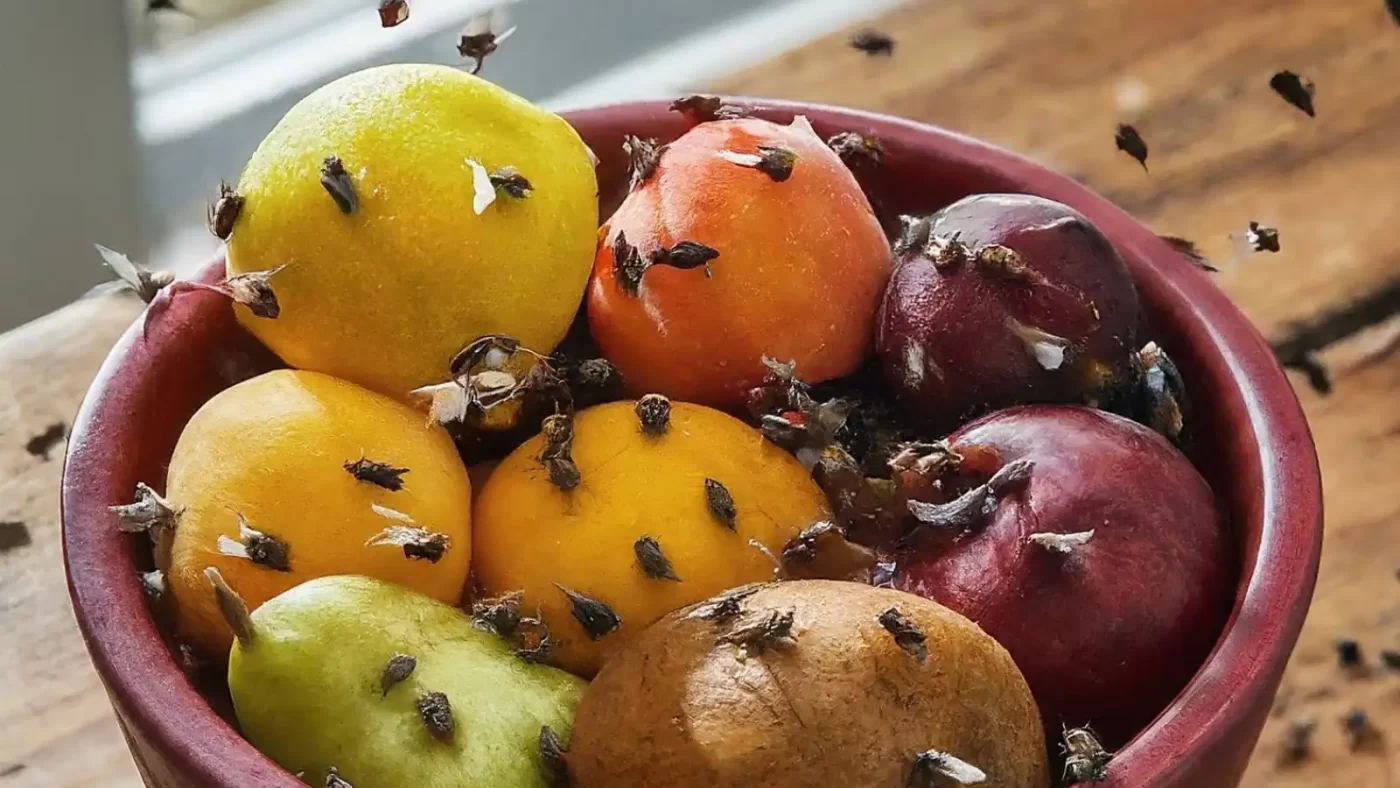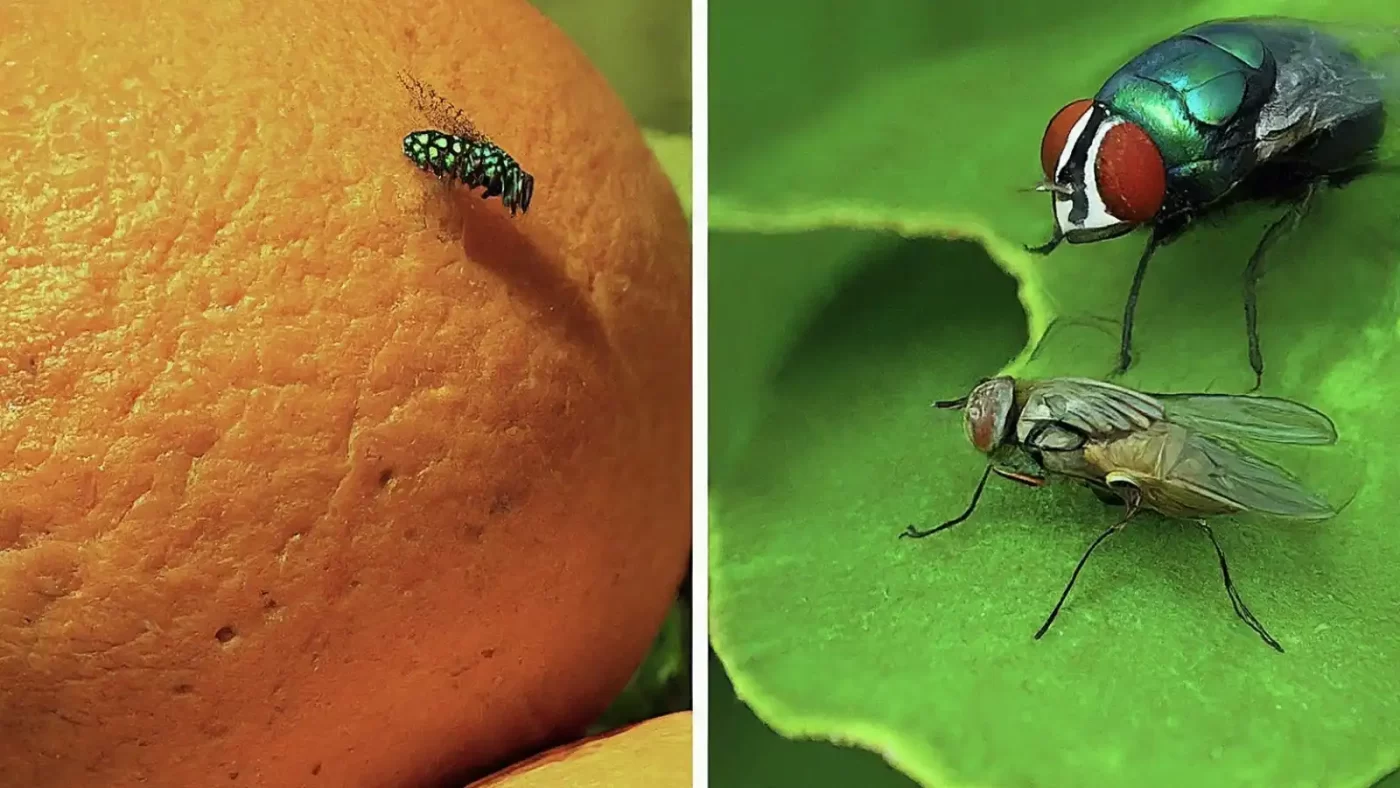Fruit Fly Facts
Fruit Fly vs House Fly? Know the Key Differences
The constant buzzing and relentless presence of tiny flies in your home is enough to drive anyone mad. Fruit fly vs house fly are among the most common culprits, and while they might seem similar at first glance, there are important distinctions to understand. This guide will help you figure out which fly is plaguing you and provide solutions to reclaim your home.
Key Takeaways:
- Size: Fruit flies are significantly smaller than house flies.
- Food Preferences: Fruit flies love overripe fruit and sugary spills. House flies prefer decaying matter and garbage.
- Health Risks: House flies pose a greater health risk due to their potential to carry diseases.
- Cleanliness: The best defense against both flies is a clean home. Dispose of rotting food, disinfect surfaces, and take out the trash regularly.
Identifying the Fruit Fly vs House Fly
Let’s dive deeper into how to identify these pesky flies:
Appearance

Fruit flies
Small (around 1/8 inch), with a tan or brown body that appears smooth and hairless. Their most distinctive feature is their bright red eyes, which are large in proportion to their head size. Fruit flies also have two sets of transparent wings and tiny black stripes on their abdomens that are difficult to see with the naked eye.
House flies
Significantly larger than fruit flies, reaching lengths of around 1/4 inch. Their bodies are typically a grayish-black color, and their large, compound eyes are a deep red. House flies also have four dark stripes running down the back of their thorax (the middle section of their body), which is helpful for differentiation from other fly species.
Additionally, house flies have hairy bodies, especially on their legs, which is another distinguishing characteristic compared to the smooth bodies of fruit flies.
Read more: 4 Difference Between Gnat vs Fruit Fly
Behavior

Fruit flies:
With a keen sense of smell, they are adept at detecting ripe or fermenting fruits and vegetables. They exhibit a characteristic hovering or darting flight pattern, particularly around these attractive sources. Additionally, fruit flies are drawn to sugary spills and leaks, as well as moist areas like drains, which provide suitable breeding grounds.
House flies:
Exhibit erratic, jerky flight patterns, constantly buzzing and changing direction. They’re not afraid to land on a variety of surfaces, including food, garbage cans, and even you! This boldness is a major difference compared to the more timid hovering of fruit flies.
Fruit Fly and House Fly Habitat

Fruit flies:
The kitchen is their kingdom – ripe fruits and vegetables left on the counter, forgotten produce lurking in the back of the crisper drawer, and the sweet temptations of a neglected compost bin are all flypaper to them. They’re also drawn to the inviting moisture and potential food scraps lurking in drains and trash cans, making these areas prime breeding grounds.
House flies:
House flies are scavengers, thriving on a wide range of decaying organic matter. From the garbage can overflowing with food scraps to a forgotten pet accident on the carpet, these flies find sustenance in filth. They’re also unwelcome guests in outdoor areas, where they’re attracted to animal feces, compost piles, and anything else decomposing.
Potential Problems
Fruit flies:
While primarily a nuisance, fruit flies can become a significant problem if their populations explode. This can lead to food contamination, especially if they come into contact with exposed or fermenting food items. Their presence often indicates a need for improved sanitation practices to prevent their rapid breeding and proliferation.
House flies:
These are walking menaces on six legs. They act as tiny taxis, hitching rides on filth and decaying matter, picking up a cocktail of harmful bacteria and pathogens along the way. When they land on your food or surfaces, they can deposit these contaminants, potentially causing illnesses like food poisoning, E. coli, and dysentery. House flies are a serious public health concern, and their presence highlights the importance of maintaining a clean and hygienic environment.
Read more: The Science Behind Fruit Fly Attraction: What Really Lures Them In?
Conclusion
Unmasking the fly in your home is the first step to taking control of the situation. Equipped with the knowledge of fruit fly and house fly distinctions – their appearance, behavior, and preferred habitats – you can launch a targeted attack. Prevention is key, so prioritize good sanitation practices to make your home an uninviting environment for these unwelcome guests. Here are some additional tips:
- For fruit flies: Store fruits and vegetables in the refrigerator whenever possible. Clean up spills and sugary messes promptly. Regularly empty and disinfect your drains.
- For house flies: Maintain a clean and tidy home, especially in the kitchen. Eliminate potential breeding grounds outdoors, such as pet waste and overflowing garbage cans. Use tight-fitting lids on trash cans and keep them outdoors whenever possible.

Hi there! I’m Beliz Güner, and welcome to my world of innovative solutions for fruit fly challenges. Though I hail from Turkey and have a background in interior design, my true passion lies in tackling the persistent issue of fruit flies. My journey has been anything but ordinary, as I’ve transitioned from creating beautiful spaces to devising effective fruit fly traps.
My interest in DIY home projects and product reviews has fueled my desire to share knowledge and personal experiences with others facing similar frustrations. Through my blog, I aim to empower you with the tools and insights needed to combat fruit fly invasions, drawing on my unique blend of design creativity and hands-on experimentation. Join me as we explore the most effective strategies to reclaim our homes from these unwelcome guests.

